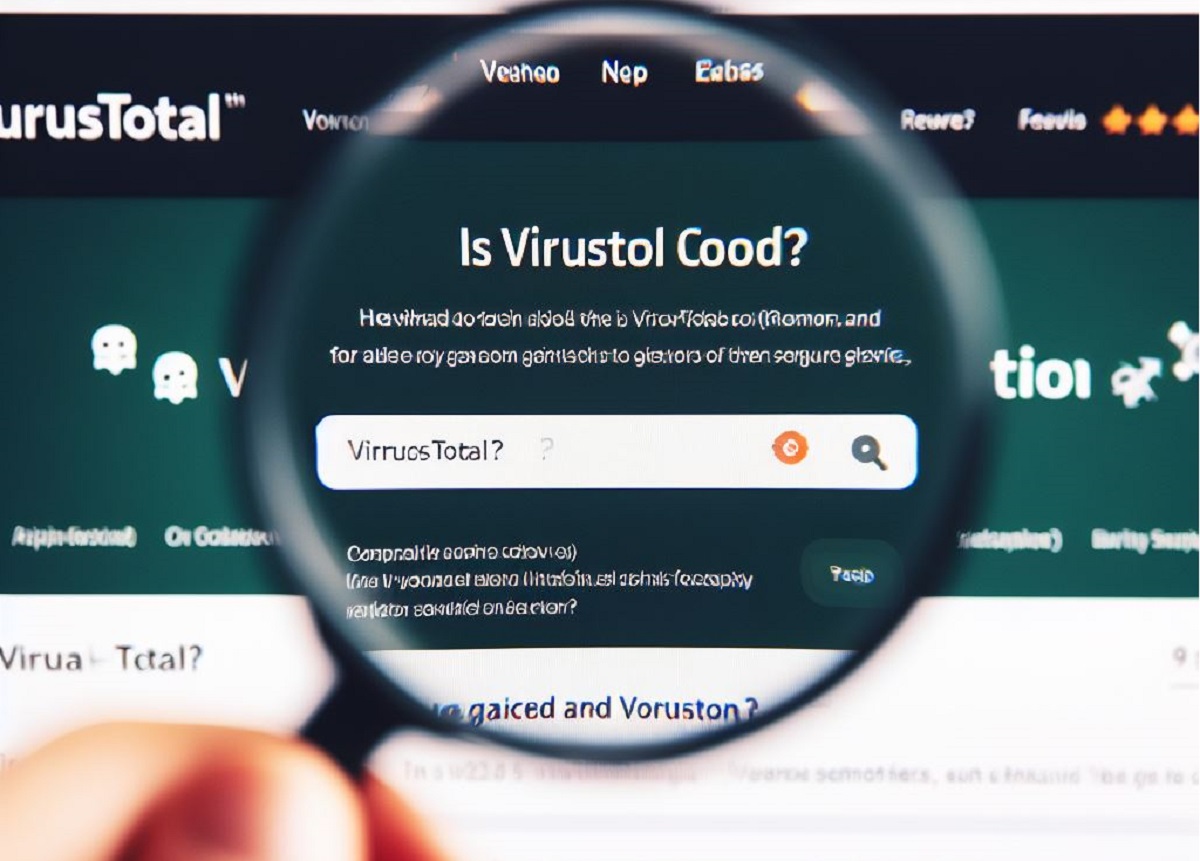Virustotal is a widely recognized online service that significantly assesses the security of digital files and URLs. It utilizes multiple antivirus engines to scan and analyze content, providing users with valuable information about potential security threats. While Virustotal has gained popularity in the cybersecurity community, its effectiveness and reliability remain a topic of discussion. In this comprehensive assessment, we will explore the strengths and limitations of Virustotal to determine whether it is a good tool for assessing security risks without using the term “Understanding.”
Virustotal: A Quick Overview
Before evaluating Virustotal’s reliability, it’s essential to understand how Virustotal works and its primary functions.
How Virustotal Works
Virustotal operates as a cloud-based service accessible through a web interface. Users can submit files and URLs for analysis. Once a file or URL is submitted, Virustotal runs it through multiple antivirus engines, which employ various detection methods to assess the content for potential security threats.
Primary Functions
Virustotal’s primary functions are twofold:
File Analysis: Users can upload files to Virustotal for scanning. This is especially useful for checking the safety of downloadable files or attachments.
URL Analysis: Virustotal also analyzes URLs to assess the safety of websites and links. This feature is valuable for checking the legitimacy of web links before visiting them.
The Reliability of Virustotal
The reliability of Virustotal as a tool for assessing security risks is a multifaceted issue that depends on various factors. We will explore these factors in depth to comprehensively understand Virustotal’s reliability.
Detection Rate
The detection rate of an antivirus tool is a critical factor in determining its reliability. A high detection rate indicates that the tool effectively identifies potential threats. Virustotal employs multiple antivirus engines, theoretically enhancing the detection rate. However, it’s important to note that the effectiveness of these engines can vary. Different engines may use different detection techniques, leading to discrepancies in detection rates.
False Positives
False positives occur when a legitimate file or URL is incorrectly flagged as malicious. The prevalence of false positives can significantly affect the reliability of a security tool like Virustotal. Users may encounter unnecessary concerns or disruptions if false positives are frequent.
False Negatives
Conversely, false negatives occur when a malicious file or URL is incorrectly labeled safe. False negatives are particularly concerning, as they can allow potentially harmful content undetected, posing a significant security risk.
Timeliness
The timeliness of database updates is another key aspect of Virustotal’s reliability. Cyber threats constantly evolve, with malware authors updating their creations to evade detection. If Virustotal needs to update its databases, it may become less effective in identifying the latest threats, undermining its reliability.
Sample Size
The effectiveness of Virustotal’s analysis depends on the diversity and volume of samples it handles. A larger and more diverse sample pool increases the likelihood of detecting known and emerging threats. The sample size can be challenging to assess, as it depends on the volume and variety of files and URLs submitted by users.
Strengths of Virustotal
Despite the ongoing debates about its reliability, Virustotal offers several strengths that make it a valuable tool for assessing security risks:
Aggregated Results
Virustotal provides aggregated results from multiple antivirus engines, giving users a consensus view of the content’s safety. This approach allows users to assess the overall risk associated with a particular file or URL.
User-Friendly Interface
Virustotal’s user-friendly interface makes it accessible to a wide range of users, regardless of their technical expertise. Users can easily upload files and URLs for analysis, enhancing its practicality.
Community Engagement
Virustotal encourages community involvement through comments and discussions on analysis reports. This engagement provides additional context and insights into the reliability of detection. Users share their experiences and interpretations of results, contributing to a more comprehensive view of a file or URL’s security.
Historical Data
Virustotal retains historical scan results for each file or URL analyzed. Users can access this data to track changes in a file’s reputation or link over time. Historical data can be a valuable resource for understanding the evolution of potential threats.
API Integration
For organizations and advanced users, Virustotal offers an API enabling its functionality integration into other systems. This allows for automated scanning of files and URLs, streamlining security assessments.
Limitations of Virustotal
It’s important to recognize the limitations of Virustotal to have a balanced view of its reliability:
Varying Detection Rates
Virustotal’s use of multiple antivirus engines can lead to varying detection rates for the same file or URL. Different engines employ different techniques, which can result in discrepancies in scan results. Users may find it challenging to determine the actual nature of a file or URL based on these varying results.
Lack of Context
Virustotal’s primary function is to provide raw scan results, but it does not offer contextual information or analysis. Interpreting these results requires some level of expertise in cybersecurity. Users need to understand the presence of detection and how to weigh the likelihood of false positives and negatives.
Limited URL Analysis
While Virustotal excels at file analysis, its URL analysis capabilities could be more robust. It may not detect phishing sites or other web-based threats as effectively as dedicated URL analysis tools.
No Remediation
Virustotal is fundamentally a diagnostic tool, not a remediation tool. It cannot remove or clean malicious files or URLs. Users must look elsewhere for tools or methods to address and resolve security threats detected through Virustotal.
License Restrictions
Some antivirus engines used by Virustotal may have license restrictions that impact their functionality or the accuracy of their detections. These license-related restrictions can introduce an element of unpredictability into the results provided by the service.
In-Depth Analysis of Reliability
Detection Rate
The reliability of Virustotal’s detection rate is contingent on the effectiveness of the antivirus engines it employs. These engines employ various techniques to identify malware, including signature-based detection, heuristics, and behavioral analysis. However, it’s essential to recognize that no single technique is foolproof, and the effectiveness of each engine can vary significantly.
False Positives and False Negatives
The issue of false positives and false negatives is intricately tied to the detection rate. False positives can be problematic because they can lead to unnecessary concerns and inconveniences for users. On the other hand, false negatives are more concerning, as they can allow malicious content to go undetected, potentially resulting in security breaches.
Timeliness
The reliability of Virustotal is also influenced by how promptly it updates its antivirus engines and definitions. In the dynamic field of cybersecurity, threats are continually evolving. Cybercriminals are adept at updating their malware to avoid detection. If Virustotal lags in updating its databases, it may become less effective in identifying the latest and most sophisticated threats.
Sample Size
The effectiveness of Virustotal’s analysis is directly related to the size and diversity of the sample pool. A larger and more diverse sample pool increases the likelihood of detecting known and emerging threats. However, assessing this aspect is challenging as it depends on the volume and variety of files and URLs submitted by users.
User Experience and Practical Considerations
Virustotal’s user-friendly interface is one of its standout features. It allows technical and non-technical users to submit files and URLs for analysis easily. The clear presentation of results simplifies assessing potential security risks associated with digital content. This user-friendliness enhances its practicality, making it accessible to a broad audience.
Furthermore, Virustotal encourages user engagement through comments and discussions on analysis reports. This collaborative aspect of the service provides additional context and insight. Users often share information, experiences, and interpretations of the results, contributing to a more comprehensive view of the reliability of detection.
The retention of historical data is another valuable aspect of Virustotal. It enables users to track how the reputation of a file or URL has evolved. This historical perspective can be instrumental in understanding the dynamics of potential threats and the reliability of assessments made by the service.
Virustotal’s API integration is a notable feature for organizations and advanced users. It allows for the automation of file and URL scanning, streamlining the process of security assessments. This API can be harnessed to enhance the reliability of security checks in various contexts.
Understanding the Limitations
Despite its strengths, Virustotal is not without its limitations:
Varying Detection Rates
Virustotal’s use of multiple antivirus engines can lead to varying detection rates for the same file or URL. Different engines may employ different techniques, resulting in discrepancies in scan results. Users may find it challenging to determine the actual nature of a file or URL based on these varying results.
Lack of Context
Virustotal’s primary function is to provide raw scan results, but it does not offer contextual information or analysis. Interpreting these results requires a degree of expertise in cybersecurity. Users must know what the presence of detection means and how to weigh the likelihood of false positives and negatives.
Limited URL Analysis
While Virustotal excels at file analysis, its URL analysis capabilities could be more robust. It may not detect phishing sites or other web-based threats as effectively as dedicated URL analysis tools. This limitation can affect its reliability when assessing the safety of web links.
No Remediation
Virustotal is fundamentally a diagnostic tool, not a remediation tool. It cannot remove or clean malicious files or URLs. Users must look elsewhere for tools or methods to address and resolve security threats detected through Virustotal.
License Restrictions
Some antivirus engines used by Virustotal may have license restrictions that impact their functionality or the accuracy of their detections. These license-related restrictions can introduce an element of unpredictability into the results provided by the service.
Conclusion
Virustotal is a valuable tool in the realm of cybersecurity, offering users the ability to assess the potential security risks associated with files and URLs. Its strengths, including aggregated results, user-friendliness, community engagement, historical data, and API integration, make it a practical choice for many users. However, it also comes with limitations, such as varying detection rates, a lack of context in results, limited URL analysis, and no remediation capabilities.
The reliability of Virustotal depends on several factors, including its detection rate, the occurrence of false positives and false negatives, timeliness in updating databases, and the size and diversity of the sample pool. Users should be aware of these factors and use Virustotal with other security measures to ensure a comprehensive approach to cybersecurity.
In the end, Virustotal can be a valuable tool in a cybersecurity arsenal, but it should not be the sole determinant of the safety of digital content. Users must exercise caution, employ best practices in cybersecurity, and consider the service’s strengths and limitations to make informed decisions about the reliability of its assessments.

